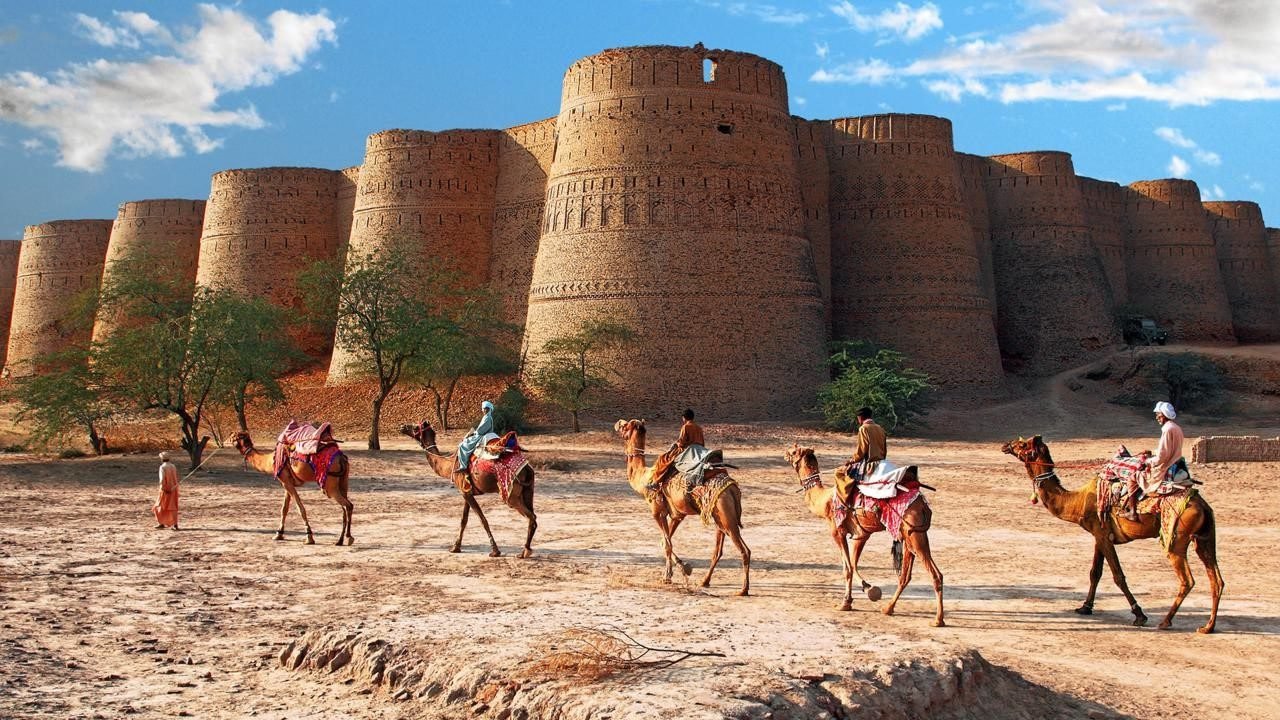Pakistan is a land rich in history and ancient cultures. From the remarkable Indus Valley Civilization to the intricate art of Gandhara, it holds secrets waiting to be discovered. Traveling to these ancient sites not only offers insight into past societies but also reveals the beauty of Pakistan’s diverse heritage.
The Allure of Pakistan’s Hidden History
Pakistan’s history stretches back thousands of years. Many think of the country only through the lens of recent events. However, beneath its modern surface lie dramatic tales and spectacular ruins that connect us to our ancestors.
Unveiling Pakistan’s Cultural Richness
Visiting Pakistan offers a unique opportunity to experience its vibrant culture. Travelers can enjoy diverse cuisine, colorful festivals, and warm hospitality, all set against a backdrop of breathtaking landscapes.
Why Choose Pakistan for Your Ancient Civilization Adventure?
With fewer crowds than other tourist hotspots, Pakistan provides a more intimate experience. Explorers can walk through ancient cities, witness magnificent architecture, and engage with local communities that cherish their heritage.
Exploring the Indus Valley Civilization
Mohenjo-Daro: A Metropolis of the Bronze Age
Mohenjo-daro stands as one of the most significant archaeological sites in the world. It’s a UNESCO World Heritage site with advanced urban planning.
Key Archaeological Discoveries at Mohenjo-Daro
- The Great Bath: An elaborate public bathing area reflecting the importance of cleanliness.
- The Granary: Evidence of advanced agricultural practices.
- Elaborate drainage systems: Indicating sophisticated urban engineering.
Understanding the Urban Planning of Mohenjo-daro
This city was designed with a grid layout. Streets were wide and lined with houses made of oven-baked bricks. The presence of public baths suggests a strong communal culture.
Harappa: Another Jewel of the Indus Valley
Harappa, another Indus Valley site, showcases similarities and differences compared to Mohenjo-daro.
Comparing Harappa and Mohenjo-daro
Both cities shared urban planning features but varied in architecture and public spaces. Harappa’s layout shows the city adapted to local geography.
The Indus Script: Unraveling the Mysteries
The script of the Indus Valley remains undeciphered. Scholars continue to explore its meanings through available inscriptions.
The Buddhist Heritage of Gandhara
The Gandhara School of Art: A Fusion of Cultures
Gandhara art reflects influences from Greek, Persian, and Indian cultures. This blend creates stunning sculptures and artworks.
Key Characteristics of Gandhara Art
- Realism: Figures depicted with lifelike features.
- Iconography: A mix of Buddhist symbols with local motifs.
Famous Examples of Gandhara Sculpture
- The Standing Buddha: A remarkable statue showcasing grace and serenity.
- Stupas: Dome-shaped structures that enshrine relics.
Taxila: A Crossroads of Ancient Empires
Taxila served as a vital center for trade, culture, and education.
Taxila’s Significance in the Spread of Buddhism
Taxila was pivotal in disseminating Buddhist teachings throughout the region. Many scholars came to study here, enhancing its cultural significance.
Exploring the Archaeological Remains of Taxila
Visitors can explore ruins of monasteries, stupas, and coins, revealing a vibrant past.
Ancient Forts and Fortifications: Echoes of Empires
The Majestic Ranikot Fort: A Wonder of the World?
Ranikot Fort is one of the largest forts globally, covering 40 square kilometers.
The History and Significance of Ranikot Fort
Built in the 17th century, it showcases complex defense architecture. Its walls reveal stories of battles and protection.
Planning a Visit to Ranikot Fort
- Best time: October through March for pleasant weather.
- Accessibility: Reachable via road from major cities.
Exploring the Khewra Salt Mines: Ancient Industry, Modern Marvel
The Khewra Salt Mines are one of the oldest in the world, dating back to 320 BC.
The History of Salt Mining in Khewra
Salt was once a precious commodity and played a crucial role in trade and economy.
The Unique Geological Formation of the Khewra Salt Mines
Visitors can marvel at stunning salt formations and structures carved from salt, providing a unique tourist experience.
The Mughal Legacy: A Blend of Persian and Indian Influences
Lahore Fort: A Testament to Mughal Grandeur
Lahore Fort stands as a symbol of the Mughal Empire’s power and architectural genius.
Exploring the Architecture and History of Lahore Fort
Constructed in the 16th century, it features magnificent halls and gardens.
Key Structures Within Lahore Fort
- Sheesh Mahal: Known for its mirrors and intricate tile work.
- Alamgiri Gate: A stunning entrance showcasing Mughal excellence.
The Shalimar Gardens: An Oasis of Mughal Beauty
The Shalimar Gardens reflect the Mughal love for nature and aesthetics.
The Design and Significance of the Shalimar Gardens
Designed in a three-tier layout, these gardens embody paradise on earth.
Visiting the Shalimar Gardens: Tips for Travelers
- Timing: Visit in the early morning or late afternoon for the best experience.
- Entry: Ensure to check timings and any special events.
Practical Tips for Planning Your Ancient Civilization Tour
Visa Requirements and Travel Documents
Ensure you have the necessary visas for your visit to Pakistan. Check official sources for the latest requirements.
Best Time to Visit Pakistan for Archaeological Tourism
The ideal months are from October to March. The weather is cooler, making exploration more enjoyable.
Transportation Options and Local Guides
Public transport and local guides are available, providing great insights into historical sites. Taxis and ride-sharing apps are also options for convenience.
Conclusion: A Timeless Journey Awaits
Exploring Pakistan’s ancient civilizations reveals rich stories and stunning landscapes.
Key Takeaways from Exploring Pakistan’s Ancient History
- Diverse cultures: Learn about the fusion of influences shaping Pakistan.
- Archaeological richness: Discover the significance of ancient sites.
Inspiring Further Exploration: Resources and Organizations
Look for organizations focused on cultural heritage for more information on guided tours and educational resources.
Preserving Pakistan’s Heritage for Future Generations
Support local efforts to protect historical sites and promote sustainable tourism. Enjoy the journey into Pakistan’s timeless past and contribute to its vibrant future.






